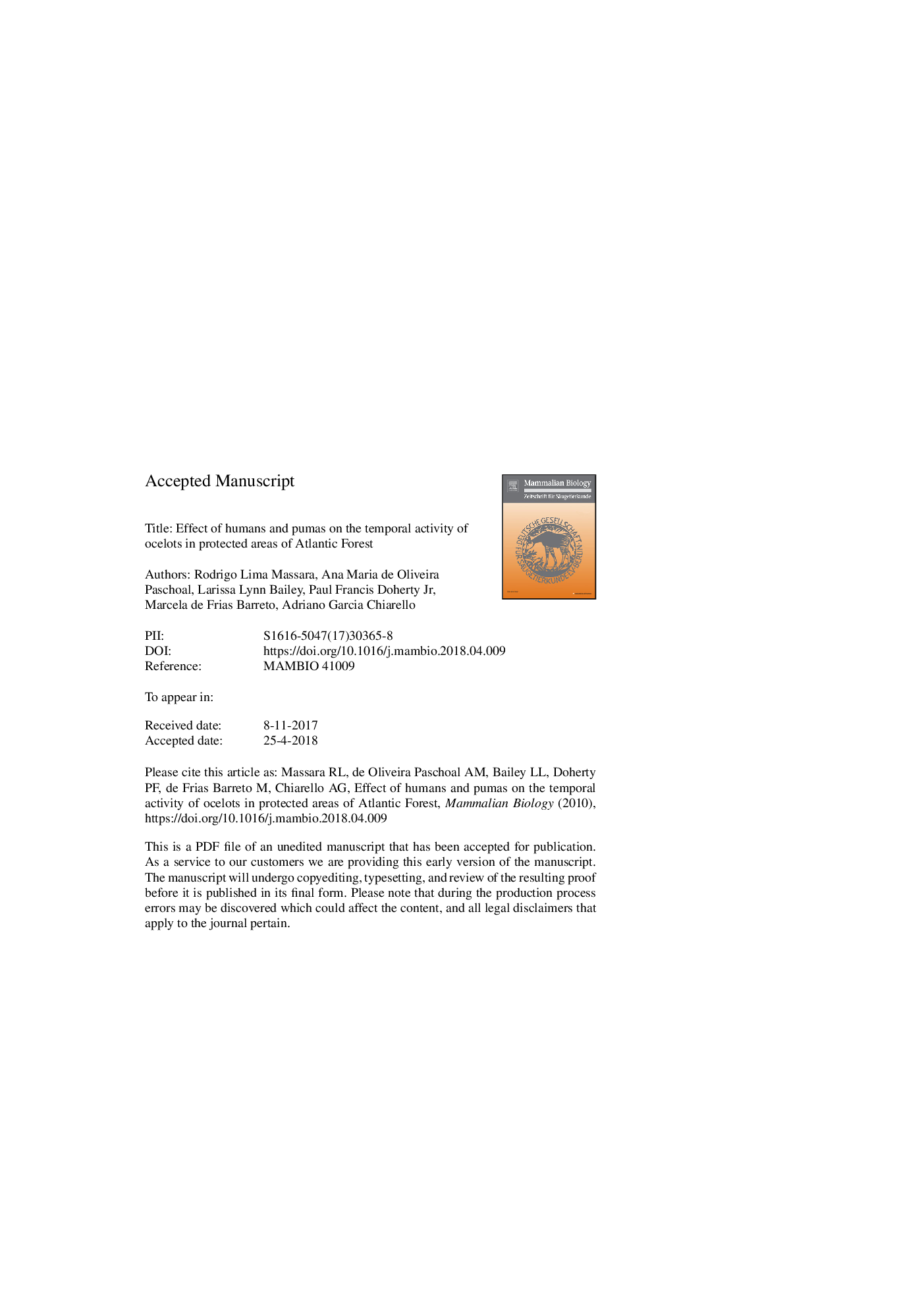| Article ID | Journal | Published Year | Pages | File Type |
|---|---|---|---|---|
| 8475537 | Mammalian Biology - Zeitschrift für Säugetierkunde | 2018 | 33 Pages |
Abstract
Temporal segregation may be one of the most effective mechanism adopted by a subordinate species to reduce competition with a dominant species. We hypothesized temporal segregation by ocelots as the main strategy of reducing direct contact with pumas and humans in Atlantic Forest protected areas. Through a standardized camera trap protocol, we measured the degree of activity overlap between ocelots and pumas and between ocelots and humans using circular statistics. Additionally, we investigated predictor variables that may influence the temporal activity of ocelots. Ocelots and pumas showed nocturnal and cathemeral activity, respectively, whereas humans were diurnal. Although the coefficient of overlap between the activity of ocelots and pumas was high (Î^1â¯=â¯0.74), the Mardia-Watson-Wheeler test showed significant dissimilarities between their daily distributions of records (Wâ¯=â¯5.86; d.f.â¯=â¯2; Pâ¯=â¯0.05). The coefficient of overlap between the activity of ocelots and humans was low (Î^4â¯=â¯0.32) as also revealed by the Mardia-Watson-Wheeler test (Wâ¯=â¯179.51; d.f.â¯=â¯2; Pâ¯<â¯0.001). Ocelots enhanced their nocturnal activity in sites where occupancy probability of pumas was high and either in sites with more pasture or near human settlements. Our finding suggests that temporal segregation may be one mechanism adopted by ocelots to allow its coexistence with pumas and humans in Atlantic Forest remnants. However, it is unknown whether temporal segregation per se will be enough to guarantee long-term persistence of ocelots in the current degraded scenario of the Atlantic Forest.
Related Topics
Life Sciences
Agricultural and Biological Sciences
Animal Science and Zoology
Authors
Rodrigo Lima Massara, Ana Maria de Oliveira Paschoal, Larissa Lynn Bailey, Paul Francis Jr., Marcela de Frias Barreto, Adriano Garcia Chiarello,
